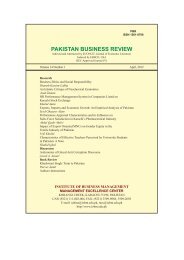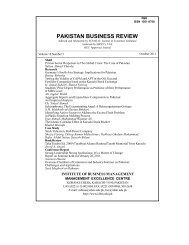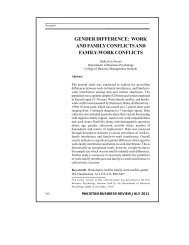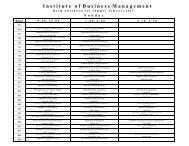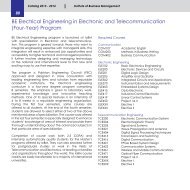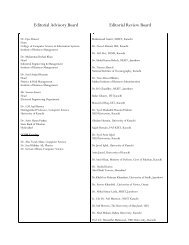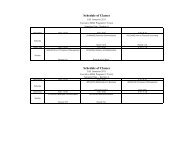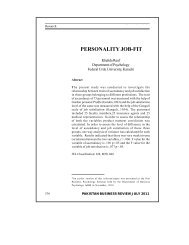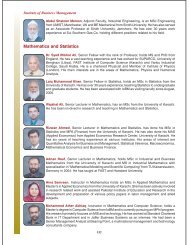PAKISTAN BUSINESS REVIEW - Institute of Business Management
PAKISTAN BUSINESS REVIEW - Institute of Business Management
PAKISTAN BUSINESS REVIEW - Institute of Business Management
You also want an ePaper? Increase the reach of your titles
YUMPU automatically turns print PDFs into web optimized ePapers that Google loves.
Refreshing Incoherence in Neoclassical Economic Theory<br />
Research<br />
strategy. The result <strong>of</strong> this anti-social behavior is the inefficiency<br />
and inequity similar to the one discussed in section 4.6 for the<br />
social abuses <strong>of</strong> entrepreneurship.<br />
The neoclassical response to the above criticism holds<br />
that sustained imperfect competition is difficult, if not impossible,<br />
for many reasons. Firstly, it is argued that even the largest firms<br />
have their competitors in producing substitute goods, if not the<br />
identical ones. Second, if a firm needs large scale investment projects,<br />
it usually needs to raise funds from financial institutions which<br />
bring them under a critical and informed eye that judges its<br />
performance by its return to savers and not to its owner. This helps<br />
spread <strong>of</strong> rewards over a wider group <strong>of</strong> consumers and not to the<br />
entrepreneur alone. Therefore, “pressure exists even on the largest<br />
firm to keep prices down, distribute economic rent widely and<br />
maintain productivity in line with smaller, specialist firms” [Cole,<br />
Cameron and Edward (1983): p. 77].<br />
4.2: Markets without Stability<br />
One <strong>of</strong> the important predictions <strong>of</strong> neoclassical<br />
economic theory is the stability <strong>of</strong> markets; that is markets have<br />
an inherent tendency to return to equilibrium. This prediction is<br />
vulnerable to changes in the underlying assumptions about the<br />
structure <strong>of</strong> the market. In a number <strong>of</strong> cases, markets go unstable.<br />
First, when economies <strong>of</strong> scale for the expanding firms at the<br />
market level are present and no individual firm is able to achieve<br />
them the on its own. Since these economies are external to the<br />
firm, it appears at the market level as a downward sloping supply<br />
curve; i.e. the larger the output, the lower the minimum average<br />
cost <strong>of</strong> production and, hence, the break-even price. However,<br />
the instability arises in this case if the supply curve slopes<br />
downward faster than the demand curve. Another case when<br />
the supply curve can be negatively sloped without internal<br />
economies <strong>of</strong> scale is decreasing cost industry. The increase in<br />
demand causes industry output to increase but as industry grows<br />
larger; it can take advantage <strong>of</strong> its size to obtain some <strong>of</strong> its inputs<br />
more cheaply. Here also the firm’s average cost curve shifts<br />
<strong>PAKISTAN</strong> <strong>BUSINESS</strong> <strong>REVIEW</strong> JULY 2011<br />
226




